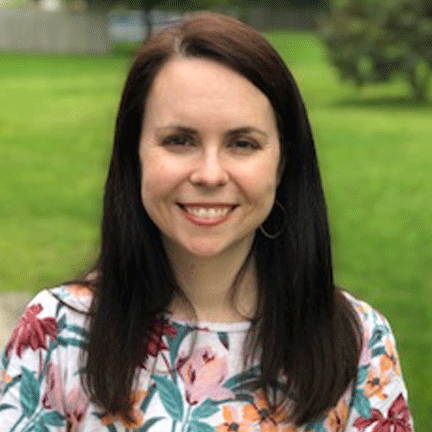My dad helped me move classrooms on a hot July day. A veteran class mover, he made me clean out my desk and declutter instead of rolling it as-is down the hall while he moved cabinets on wheels and borrowed a dolly for the bookshelves. The new room looked much the same as the old, just one-third the size. I had so much to move that I kept bruising my hips walking into things. We shoved bookshelves against the wall and jammed cabinets into any space they would fit. I covered all the desks with boxes of books.
I was tired and dismayed when I looked at the mess that had taken us hours to make. I stood at my desk, trying to visualize this room in the same order my last one had been in and to figure out how I would make everything fit, but my dad wanted me to do things differently.
“Every bit of this can be moved again,” he said. “Don’t try to make it look just like your old room. It won’t work. Think about what works here.”
As a busy perfectionist, I tended to want to stick with the room organization that had worked for years so I could just get everything unpacked and neat. But he was right. Because I was working with another off-white, cinder-block room, it was easy to make it work and look exactly like every other room. To make this a room where my students learned and thrived, I needed to consider the differences and intentionally make choices to help all of us.
What do you want for your students in this room?
I want my students to become independent learners who grow in both their literacy skills and their love for literacy. To help them accomplish this, they need easy access to resources—both print and digital—and space that moves easily between group work and independent work. Naming this helped me evaluate my overcrowded space and decide what needed to go and how to rethink the desk organization to maximize individual flexibility in this smaller classroom. Instead of my initial rushed instinct to find the first space where things would fit and look cute, I focused every decision on how this room could help students meet individual growth goals.
In this smaller classroom, I started by getting rid of some of the desks, because my class rosters indicated I wouldn’t need them all. That freed space in the back for a small round table that doubled as a place to store print materials and a workspace for groups. I moved a bookshelf behind my desk to make space for the Chromebook cart near the door, and I filled the front wall with the student library, letting students access both as soon as they walked in the door. Then I spaced the remaining desks to easily turn together.
What is important for students to have in this room?
I admit it: I’m a bit of a hoarder. I had crammed the new room with class sets of novels I never taught, novels from my library that no one had chosen in years, and a cabinet almost full of teaching resources left over from previous teachers that I couldn’t stand to throw away in case I needed them someday.
My students needed to be able to see the few class sets we would be reading. They needed access to a class library that was carefully curated to student interest with books they chose to read, not filled with low-interest texts just because they were there. They needed the extra space in the room that would be left by rolling the cabinet into the hall with a “free” sign on it. It was silly to hold on to all the extras, and it was overwhelming for students. I chose the things I kept based on what we would need that year, and the few things I still couldn’t stand to throw away were packed into a box and put into my garage, where my husband finally took the decision out of my hands and got rid of them. I have never missed them.
What do you need as a teacher in this room?
When I reflected on my teaching for the past couple of years, I thought carefully about the things that had been difficult and how I could start to correct them in this new classroom. I needed to be able to move freely through the room and work with students individually and in groups. I wanted to be able to easily model my own reading and writing struggles. I didn’t want my desk to be a central point where students either expected me to be or mistook as the place to drop papers that would never be seen again. I was weighed down by paper clutter that never seemed to leave my desk.
I squeezed my desk into the back corner, leaving more area free for student workspace, and I set up a stack of shelves right beside it where students could leave work and I had easy access to respond to it more quickly after their classes were over. I set up the document camera in the extra space I now had by the desk so that student attention would not be on me when we were looking at my writing but on the screen. I also added a pile of office “organizer” tools to the free cabinet in the hall, because organizers are full of promise for me but just leave my desk feeling messy and scattered.
In old buildings like the one where I work, digital infrastructure has been worked through old walls and ancient electrical systems. I don’t have a choice about where my computer has to go, or my phone, and it’s tempting and easy to organize everything around the things I can’t control. But answering these questions before I set up my classroom helped me refine my goals for student learning and reimagine the possibilities within the space we do have.






